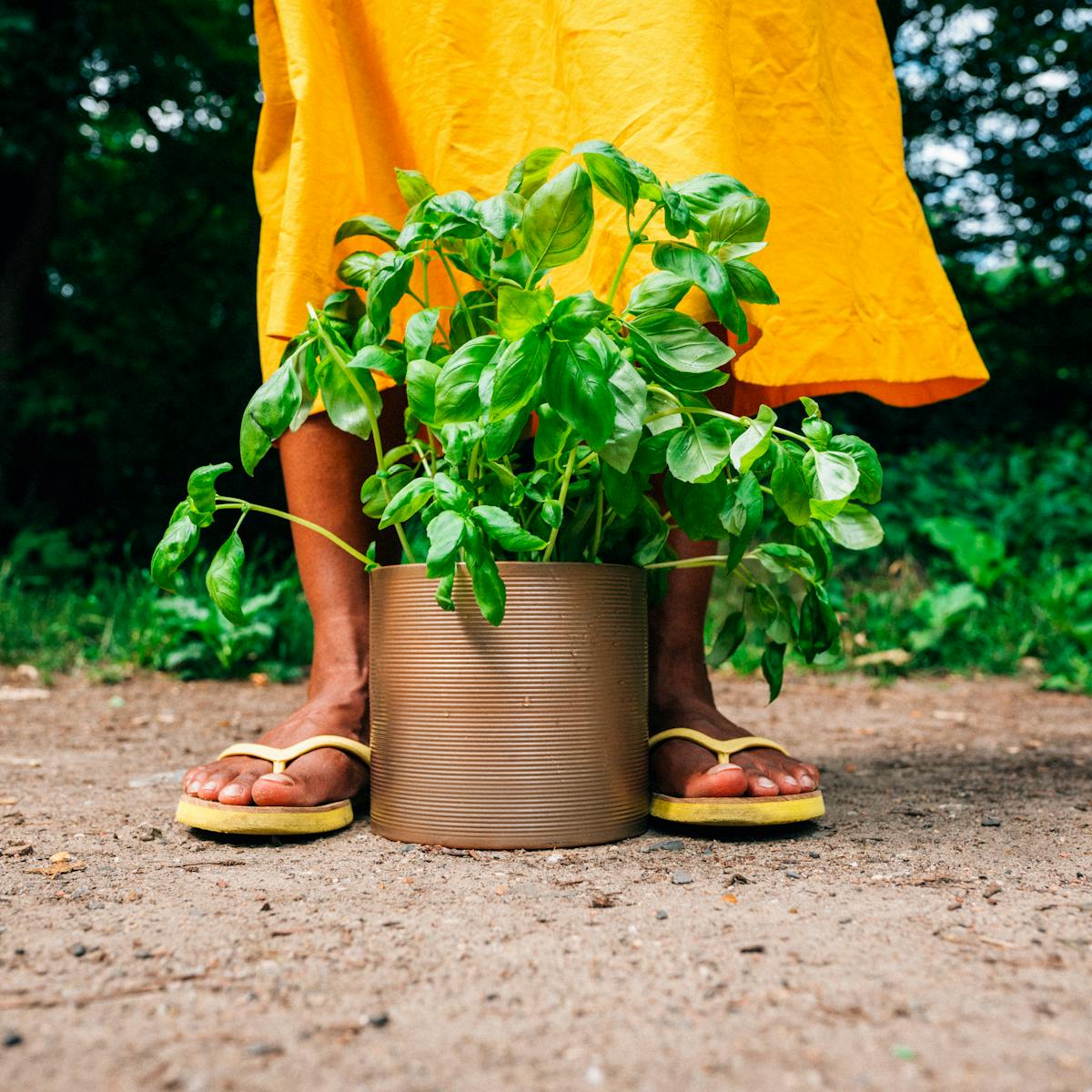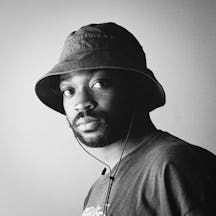Unable to attend her beloved grandmother’s funeral, Jennifer Neal wondered whether it might be possible to create a ceremony of her own. One that acknowledged the complex course of life, while also honouring the ritual of burrowing into the earth. She instinctively turned to plants, and the loving act of potting them and keeping them alive.
The first plant that I managed to keep alive was a basil shrub I bought after writing my grandmother’s eulogy – so I named it Mary Edith. Within a few days, its fragrant dark green leaves had withered into ailing yellow curls that broke and fell apart, where they died a second time in the flooded soil. Already it had too much in common with its namesake, who was taken first by Alzheimer’s disease and then by heart failure.
I took the plant back to the nursery and placed it atop the wooden counter that separated the gardening experts from the charlatans. The man at the counter tipped the plastic blue pot to the side, and we both watched the water drain from around the rim, carrying the dead leaves along with it in a procession that spilled over the edge onto the floor.
“You drowned it.” The loose skin beneath his chin wobbled as he laughed. “You wanna eat it or waterboard it to death?”
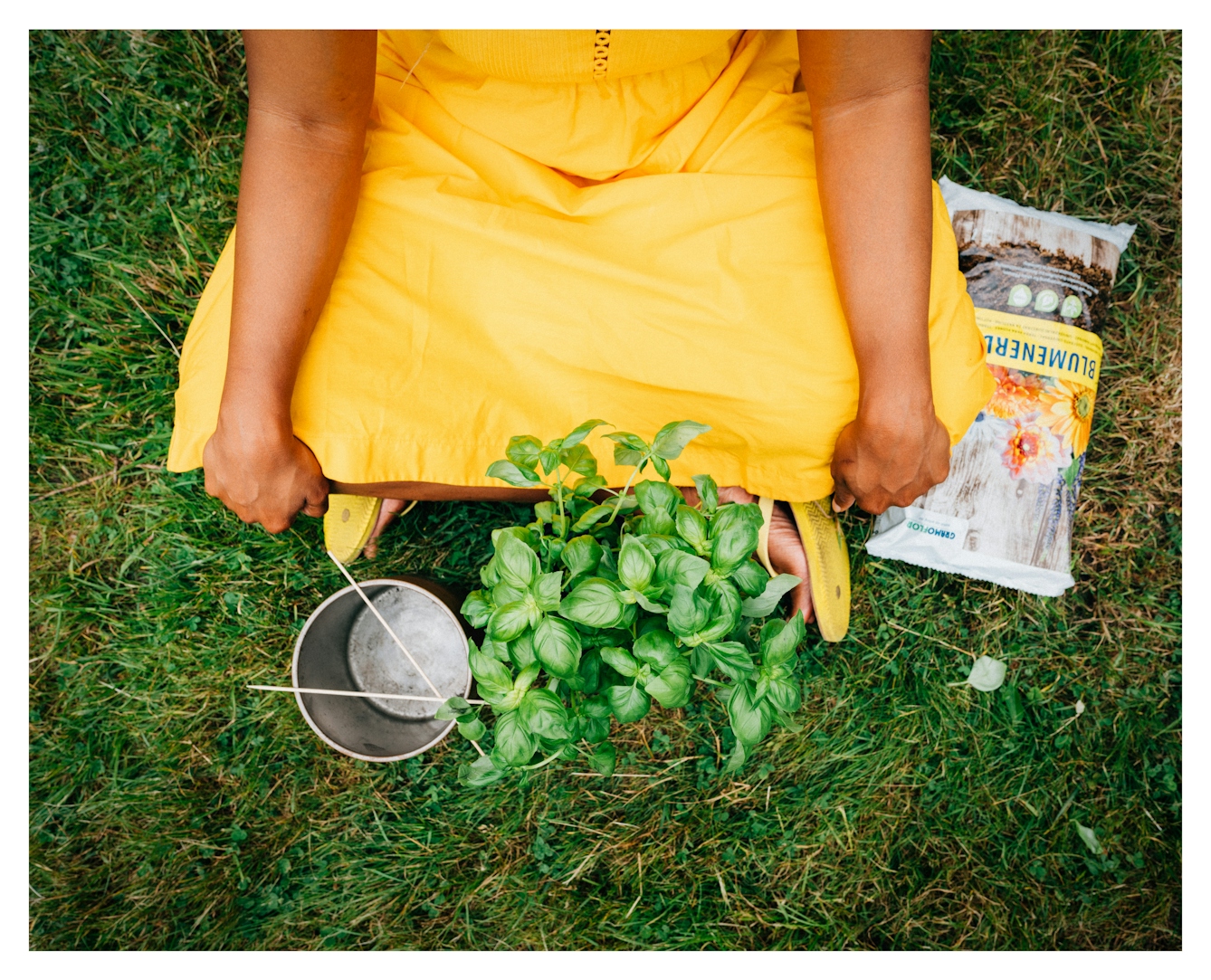
“When I returned home with the basil shrub, I researched how best to keep it alive.”
He pulled out a new plastic container and repotted the plant, taking care to handle its pale, white roots, which shrivelled to evade the light. He took out the shears and started cutting away at the dead leaves, collecting them in his hand and crushing them between his fingertips, which he sniffed every few seconds for signs of life. When he was finished, he pushed the plant back towards me.
“There you go. Good as new.”
I pulled the shrub back to me, uncertain about his assessment – suspecting that the plant could just decide to die again from spite. Up until that point, my general insouciance had led every plant I owned to an expeditious and unfortunate end.
Walking out of the nursery, I wasn’t entirely convinced that I would be any more attentive this time. But, overwhelmed by the loss of my grandmother as I was, with no proper outlet for the grief, I was more invested in this shrub’s survival than I had been with any bouquet or potted flower bush before it.
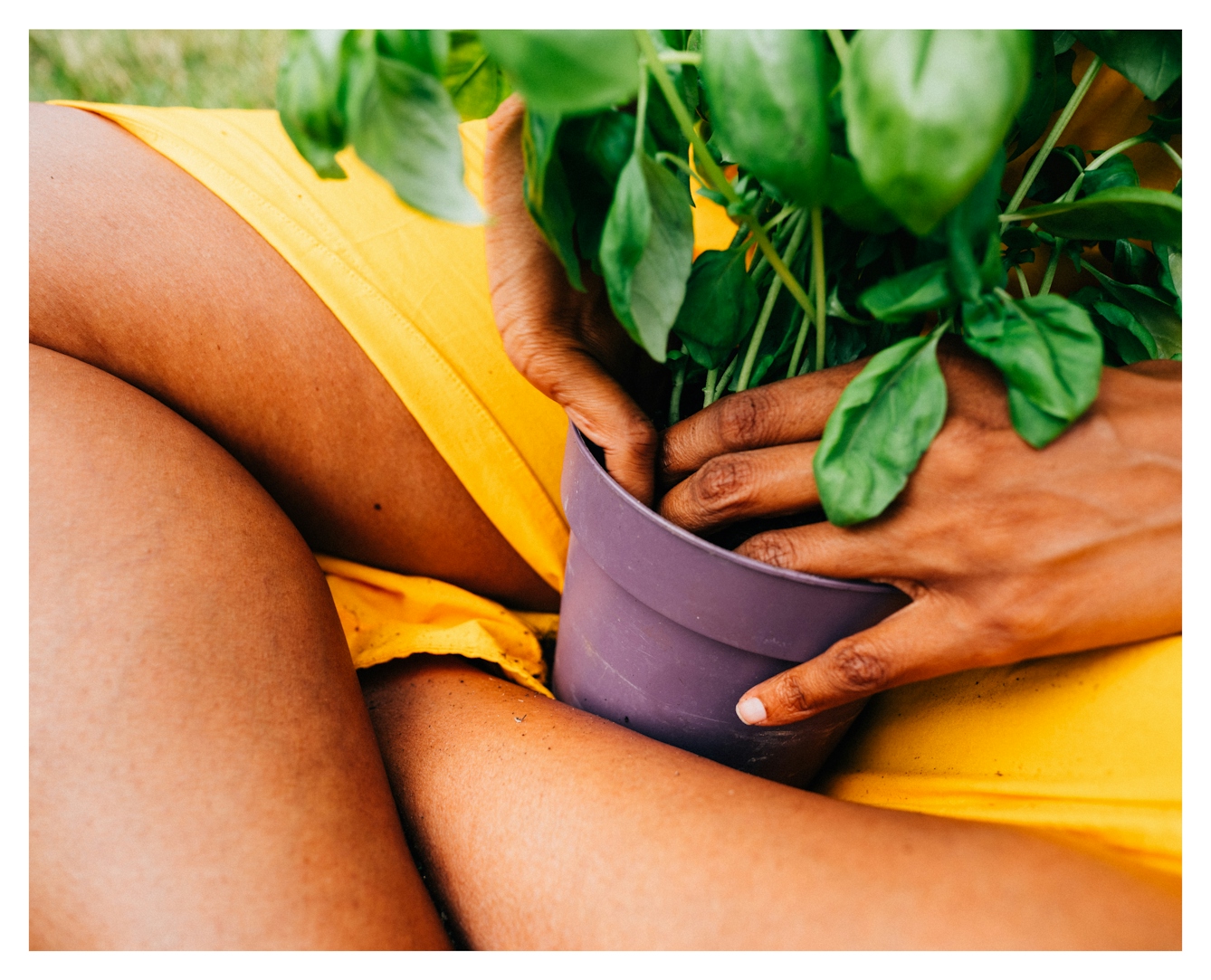
“I trimmed its dead leaves, plucked its healthy ones for pesto, and positioned it in a sunny corner of my flat.”
It wasn’t actually my grandmother’s death that devastated me. Having watched her decline from a distance over the previous 18 months, I knew what to expect. Phone calls had become sparser and more infrequent. The last time I had seen her, she confused me for her own mother, a woman I never knew but whose shared resemblance had become a familiar rallying cry among my entire family.
To bury a seed
The thought of my grandmother finally being at peace was the only prevailing comfort. But my absence from the ritual of communal grieving with my parents and cousins, the cost of which I felt intimately – even from the opposite side of the world – was impossible to resolve.
It’s a feeling I’ve had to contend with many times since deciding to leave the US nearly 15 years ago. I have moved around the world for work, for love, and for the pursuit of my own creative joy, which has meant accepting a permanent partition between my homeland and the life I want, replete with access to affordable healthcare and education.
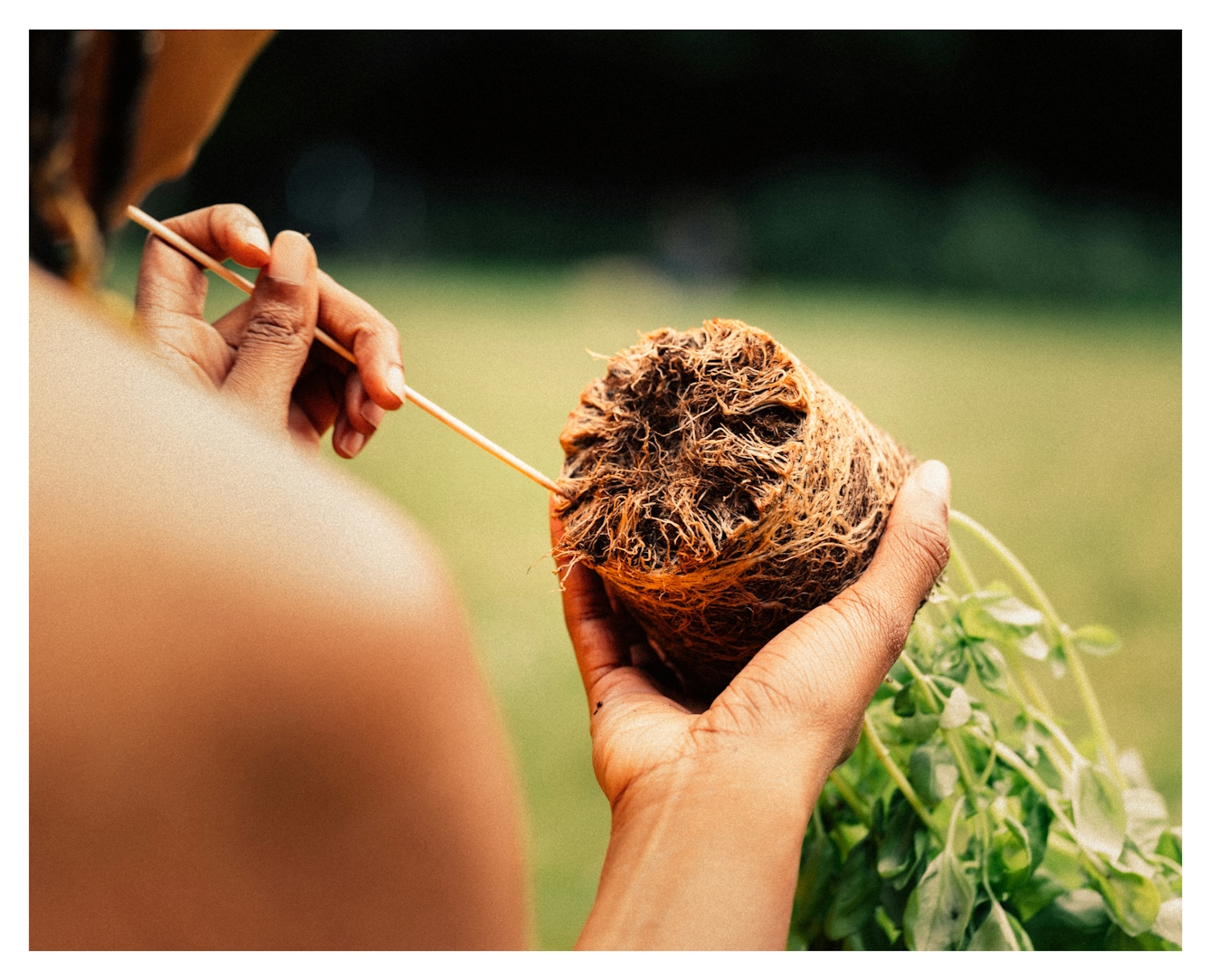
“I rehouse the plant, gently easing the pale roots apart, before placing it into a gold, dimpled ceramic pot reminiscent of an urn.”
This separation has only become exacerbated during the pandemic. I find myself constantly at the mercy of erratic government restrictions, changing travel regulations, and mutating variants that have kept me from grieving the loss of life with the people I value most.
I held on to images, memories, conversations and, most of all, recipes, with an iron grip that did not bring me any closer to letting her go and moving on.
My grandmother’s death was the first time I was unable to be home to mourn a loved one. And, unable to distil that cavernous loss in the pit of my stomach into a sense of acceptance, I instead held on to images, memories, conversations and, most of all, recipes, with an iron grip that did not bring me any closer to letting her go and moving on.

“I laid a layer of soil down first, then carefully placed the plant inside, filling it up with my hands as they negotiated the dirt to keep the layers even.”
In lieu of that ceremony, I asked myself if it was possible to create one of my own. One that acknowledged the complex course of life, with all its intricate mechanisms, while also honouring the ritual of burrowing into the earth.
I needed a way to lay her – and, by default, our relationship – to rest. And since ritual can either be communal or solitary, I decided to create one specific to the physical distance that kept me away. This ritual would assist me in the protracted process of knowing that someone I loved was gone for ever.
A ritual
When I returned home with the basil shrub, I researched how best to keep it alive. I trimmed its dead leaves, plucked its healthy ones for pesto, and positioned it in a sunny corner of my flat, with the blinds tilted askew so as not to roast it alive with direct light. I rotated it every single day to prevent the branches from leaning too far in one direction, and watered it generously when its soil ran dry, humming little affirmations of encouragement that embarrassed me to speak too loudly.
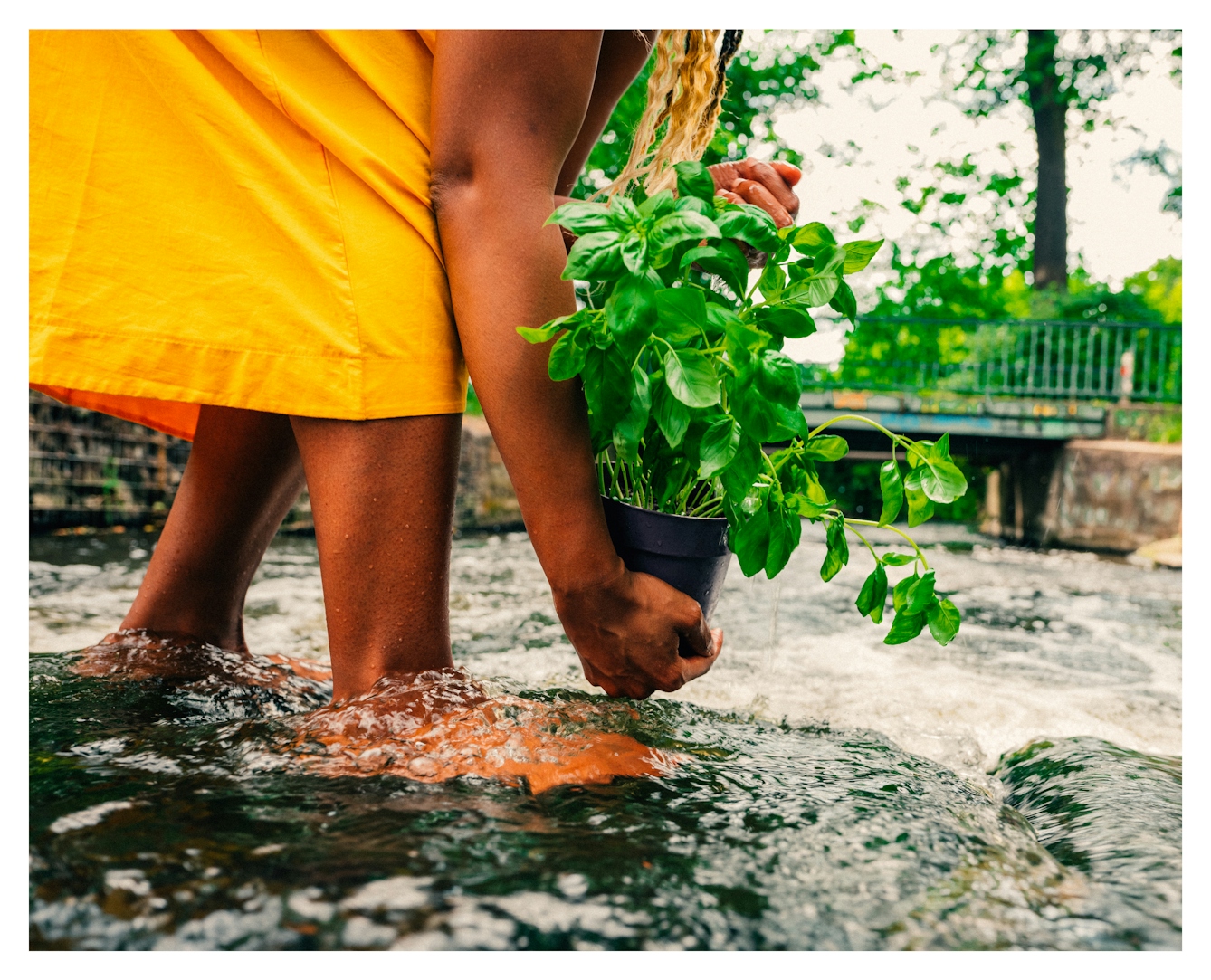
“I rotated it every single day, and watered it generously when its soil ran dry.”
It became my ritual, a bridge between life and death, that I struggled to maintain for weeks, until the plant began to stretch, extending its branches an additional seven inches to the sky, while the leaves thickened with dark, curly veins – until its roots crowded the plastic pot, and the plant began to wither again.
I quickly rushed to rehouse the plant, gently easing the pale roots apart, before placing it into a gold, dimpled ceramic pot reminiscent of an urn. I laid a layer of soil down first, then carefully placed the plant inside, filling it up with my hands as they negotiated the dirt to keep the layers even, coaxing the roots to spread evenly between my fingers. Burying the plant once more, but this time in such a way that stimulated life.
That is, after all, the point of funerals. Death is the unwanted guest that will inevitably come to visit us all. It is impossible to rally against, but funerals give death a place, so that when we bury our loved ones, we can acknowledge it. And when we say goodbye to both it and them, then can we get on with the business of living – even if we have to reimagine our lives in ways we would rather not.
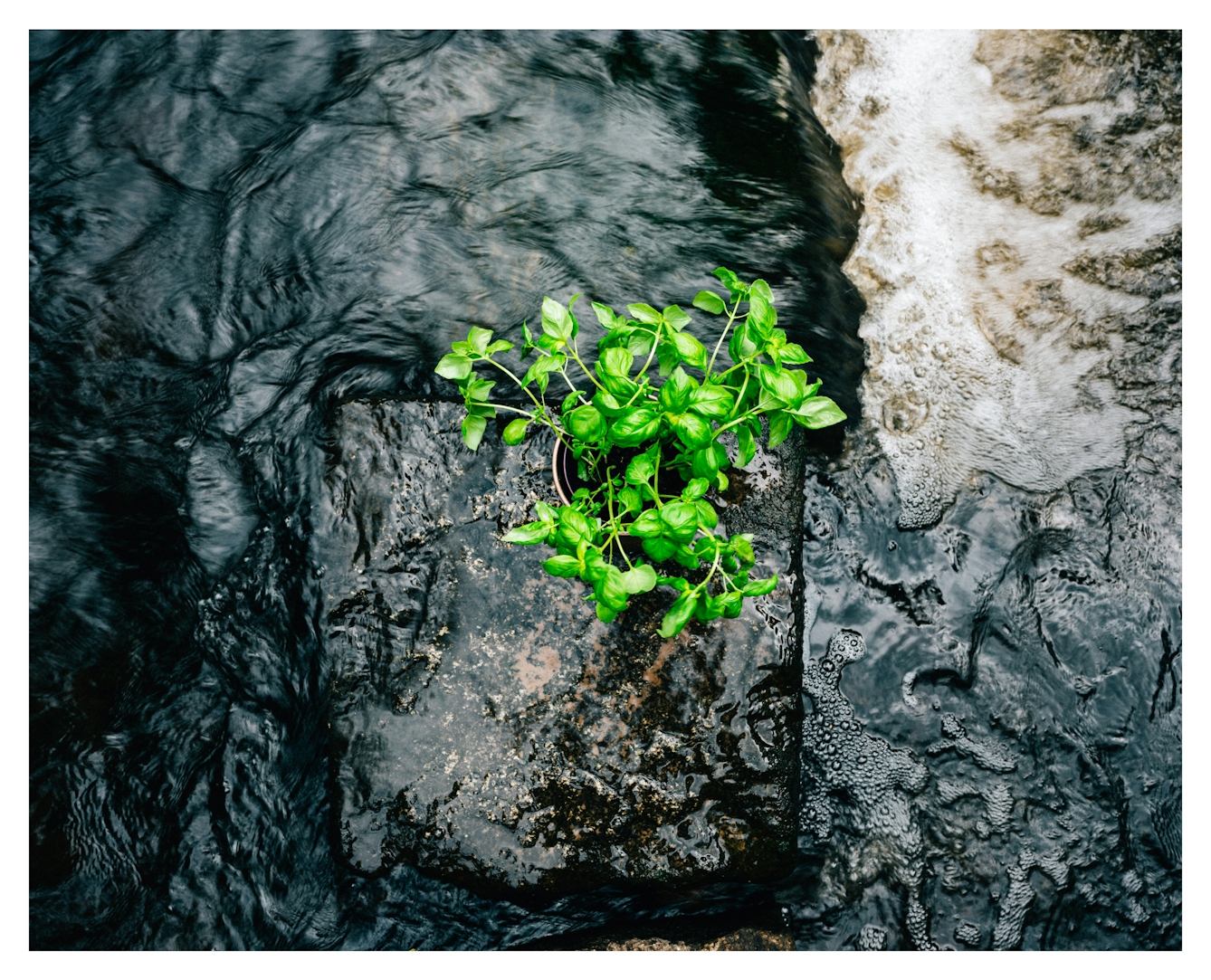
“A basil shrub for my grandmother, because her affections were best expressed through feeding the people she loved.”
In bloom
I remind myself of that often when I pot new plants – a ritual that is now, after many years, enshrined with a dozen steps to honour the lives they represent.
A lavender shrub for my aunt Anne, because she always smelled like spring. An aloe plant for my cousin Lorenzo, whose skin was always a little bit dry. A chilli bush for my friend Jorge – who bragged about his high tolerance for spicy food, an assertion that was wholly based on his own tireless self-belief rather than his actual palate.
And, of course, a basil shrub for my grandmother, because her affections were best expressed through feeding the people she loved – never letting me leave her house without at least three five-flavour pound cakes sealed in airtight containers, and a belly full of slow-cooked greens.
Being unable to fly home for their services has not meant being unable to mourn their losses. It has meant redefining my relationship with life and death in a way that is accessible to me while being authentic to the grief their absences have left me to process. To lament. To celebrate – and then to submerge them into the ground, so that life can begin again.
About the contributors
Jennifer Neal
Jennifer Neal is an author, journalist, musician, visual artist and occasional stand-up comedian based in Berlin. Her work has appeared in Gay Magazine, Atlas Obscura, The Willowherb Review and Playboy, among many others. She is a 2021 MacDowell Fellow, and her first novel, ’Notes on Her Colour’, will be published in May 2023 with Catapult (US) and Penguin Random House Australia. Her non-fiction book, ‘My Pisces Heart’, will be published in autumn 2024 with Catapult (US).
Foli Creppy
Foli Creppy is a Berlin-based photographer and director that delivers innovative and disruptive perspectives. His work triggers interpretation and deliberately cultivates discourse. He is passionate about giving a voice to the underrepresented and tells unconventional stories of intimacy and personality. Foli’s upbringing between Togolese and German culture is reflected in his broad pictorial understanding and a distinct choice of subject, composition, and colour. Creative storytelling and a fusion of diverse interests have led to numerous collaborations with global brands such as Calvin Klein, Sony Music, Universal Music, Oceans Apart, Converse, Puma, and Meta.
